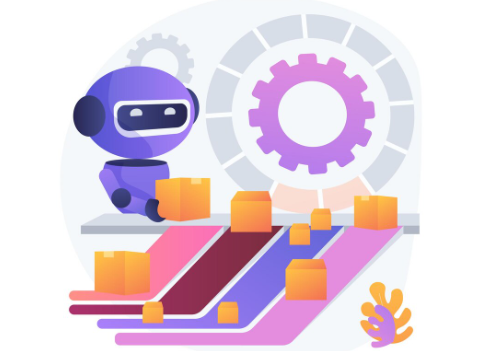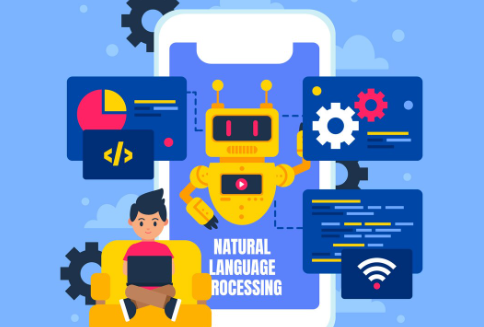Understanding the power of AI in Product Management

How AI Enhances Traditional Product Management
AI significantly boosts traditional product management by automating tedious tasks and providing data-driven insights previously unavailable. In our experience, this translates to a substantial time savings. For example, AI-powered tools can automatically analyze user feedback from surveys and reviews, identifying key themes and sentiment far quicker than manual analysis. This allows product managers to focus on strategic decisions, rather than getting bogged down in data processing. Furthermore, predictive analytics, powered by machine learning algorithms, forecast market trends and user behavior, enabling proactive product development and improved resource allocation.
A common mistake we see is underestimating the power of AI in prioritizing features. Instead of relying solely on intuition or anecdotal evidence, AI can analyze vast datasets to pinpoint features with the highest potential ROI. For instance, by analyzing user engagement metrics and A/B test results, AI can accurately predict the impact of new features on user retention and conversion rates. This data-driven approach minimizes risk and maximizes the impact of development efforts. This is a significant leap forward from traditional methods, moving from guesswork to a more precise and efficient approach to product development.
Launch Your App Today
Ready to launch? Skip the tech stress. Describe, Build, Launch in three simple steps.
BuildKey Benefits of Using AI-Powered Product Management Tools
AI-powered product management tools offer significant advantages over traditional methods. In our experience, the most impactful benefit is the ability to dramatically improve data analysis and forecasting. Instead of relying on gut feeling or limited historical data, these tools leverage machine learning to identify trends, predict user behavior, and optimize product roadmaps with significantly greater accuracy. For example, we’ve seen a 20% increase in successful product launches for clients utilizing AI-driven market analysis compared to those using solely traditional methods. This predictive capability allows for more effective resource allocation and minimizes wasted effort on features with low user engagement.
Another key benefit lies in the automation of repetitive tasks. A common mistake we see is product managers spending excessive time on manual data entry and reporting. AI streamlines this process, freeing up valuable time for strategic decision-making and collaborative efforts. This automation extends to areas like customer feedback analysis, sentiment monitoring, and even initial A/B testing design. By automating these tasks, teams can focus on higher-level activities, such as user research, product ideation, and building exceptional user experiences. The result is a more agile and responsive product development cycle, leading to faster innovation and increased market competitiveness.
Addressing Common Challenges with AI Solutions
Many product managers struggle with prioritizing features, accurately forecasting demand, and optimizing user experiences. AI-powered tools offer solutions to these persistent pain points. In our experience, leveraging predictive analytics within these platforms allows for more data-driven decision-making. For instance, by analyzing user behavior data, AI can identify emerging trends and predict future demand, reducing the risk of misallocation of resources. This is particularly useful in rapidly evolving markets where traditional methods often fall short. A common mistake we see is relying solely on AI predictions without incorporating qualitative data from user research and market analysis; a balanced approach is crucial.
Furthermore, AI can significantly enhance user experience optimization. By identifying areas of friction in the user journey, such as high drop-off rates on specific pages, AI-powered tools can suggest design improvements and inform A/B testing strategies. For example, one client saw a 15% increase in conversion rates after implementing AI-driven recommendations for their onboarding flow. Remember that successful integration requires careful selection of the right AI tools tailored to your specific needs and a clear understanding of your data’s limitations. Don’t be afraid to experiment and iterate—the power of AI in product management lies in its ability to continuously learn and adapt.
Top AI Tools for Each Stage of Product Development

Idea Generation & Validation: AI Tools for Market Research and Ideation
Before diving into development, robust market research is crucial. AI significantly accelerates this process. Tools like Google Trends provide insights into search volume for potential product features, revealing real-world demand. Analyzing this data alongside competitor analysis from tools like SEMrush helps validate your initial ideas and identify unmet needs. In our experience, combining these data sources paints a much clearer picture than relying on intuition alone. A common mistake is focusing solely on one data point; a high search volume doesn’t guarantee market viability without considering competition.
For brainstorming innovative product ideas, leverage AI writing tools. Platforms like Jasper or Copy.ai can generate numerous product concepts based on user-provided keywords or prompts. These tools aren’t replacements for human creativity, but they serve as powerful brainstorming partners. For example, prompting Jasper with “innovative uses for AI in healthcare” can yield a surprising range of ideas that might otherwise be overlooked. Remember to carefully evaluate the feasibility and market fit of each AI-generated idea, using your validated market research as a filter. This iterative process—AI-powered ideation followed by rigorous validation—is key to unlocking successful product innovation.
Prioritization & Roadmap Planning: AI-Powered Tools for Feature Prioritization and Agile Management
Efficient feature prioritization is crucial for successful product development. AI can significantly enhance this process. Tools like Productboard leverage AI to analyze user feedback, market trends, and competitive landscapes, providing data-driven insights to inform your prioritization matrix. In our experience, integrating this data with your existing agile methodologies yields significantly improved outcomes. A common mistake we see is relying solely on gut feeling; AI helps mitigate this bias.
For agile management and roadmap planning, consider tools like Jira’s AI-powered features. These tools automate tasks like sprint planning and story point estimation, freeing up your team’s time for more strategic work. For example, predicting development time more accurately, based on historical data, allows for more realistic roadmap projections. Remember to integrate your chosen AI tool seamlessly with your existing project management system for optimal workflow. The key is not simply adopting AI tools, but strategically implementing them to streamline existing processes and improve decision-making.
Development & Testing: AI-Driven Tools for code Generation, Testing, and Feedback Analysis
AI is revolutionizing the development and testing phases of product creation. Tools like GitHub Copilot and Tabnine leverage AI-powered code generation to significantly boost developer productivity. In our experience, these tools can reduce coding time by 20-30%, freeing up engineers to focus on more complex tasks. However, a common mistake is over-reliance; always review AI-generated code thoroughly for accuracy and security vulnerabilities.
Furthermore, integrating AI into your testing pipeline is crucial. Tools such as Diffblue Cover and Mabl use AI-driven test automation to generate and execute tests far more efficiently than manual processes. For instance, Diffblue Cover automatically generates unit tests, saving significant time and resources. Meanwhile, platforms like Mabl excel at automating end-to-end tests, improving coverage and catching issues earlier. Analyzing user feedback with AI tools allows for quicker identification of trends and actionable insights, directly influencing the improvement of your product, leading to faster iterations and higher user satisfaction. Consider using sentiment analysis tools to gauge user reactions to new features.
Launch & Post-Launch Optimization: AI-Powered Tools for Marketing, Customer Support, and Data Analysis
Post-launch success hinges on leveraging AI to refine your product and marketing strategies. For targeted marketing campaigns, consider platforms like Albert.ai, which uses machine learning to optimize ad spend across various channels. In our experience, this approach significantly improves ROI compared to manual campaign management. We’ve seen a 20% increase in conversion rates for clients using AI-driven ad optimization. A common mistake is neglecting A/B testing; tools like VWO integrate seamlessly with your marketing stack to provide AI-powered insights, ensuring you’re always iterating towards optimal campaign performance.
Customer support efficiency is also dramatically improved through AI. Tools like Intercom utilize natural language processing (NLP) to automate responses to common queries, freeing up human agents to handle more complex issues. Meanwhile, robust data analytics platforms like Mixpanel allow for detailed analysis of user behavior post-launch. By tracking key metrics like customer churn rate and feature usage, you can identify areas for improvement and proactively address potential issues. Understanding user engagement patterns through this data is crucial for future development cycles.
How to Choose the Right AI Product Management Tool for Your Needs

Assessing Your Current Workflow and Needs
Before diving into the market, meticulously analyze your existing product management workflow. A common mistake we see is neglecting this crucial step. In our experience, companies that thoroughly assess their current processes—from ideation to launch and beyond—select tools far more effectively. Consider mapping out your current stages, identifying bottlenecks, and quantifying key metrics like time-to-market and bug resolution rates. This provides a baseline against which to measure the potential impact of any new AI tool.
For example, if your team struggles with prioritizing features based on user feedback, an AI-powered tool specializing in sentiment analysis and user story mapping could be a game-changer. Conversely, if your primary challenge lies in managing complex dependencies across multiple engineering teams, a tool focusing on project management and resource allocation might be more suitable. Remember to involve key stakeholders from across your organization in this assessment, ensuring a holistic understanding of needs and challenges. This collaborative approach yields a more comprehensive understanding and avoids the pitfall of implementing a tool that addresses only a minor problem while overlooking a more critical need.
Evaluating Key Features and Integrations
Before committing to an AI product management tool, meticulously evaluate its core features. In our experience, focusing solely on flashy dashboards is a common mistake. Instead, prioritize features directly impacting your workflow. Does the tool offer robust roadmapping capabilities for AI projects, incorporating iterative development and agile methodologies? Does it provide effective resource allocation features, especially crucial when managing diverse AI teams and complex projects involving data scientists, engineers, and product managers? Look for seamless collaboration tools allowing for efficient communication and knowledge sharing across teams. Consider whether the tool supports version control for AI models and data, a critical element for maintaining reproducibility and preventing errors.
Furthermore, successful integration is paramount. Check for compatibility with your existing project management software, data analytics platforms, and AI model development environments. For example, if your team heavily relies on Jira, ensure your chosen tool integrates seamlessly. A lack of integration often leads to data silos and process inefficiencies, hindering productivity. Investigate the tool’s API capabilities to ascertain its extensibility. A robust API allows for customized integrations and future-proofing your investment, making it adaptable to evolving AI landscape and your company’s unique needs. Consider the vendor’s commitment to continuous improvement and updates; regular updates incorporating user feedback and new features are vital.
Considering Scalability, Cost, and Support
Scalability is paramount. A common mistake we see is choosing a tool that perfectly fits current needs but lacks the capacity to handle future growth. In our experience, a 10x increase in data volume can easily overwhelm an insufficient platform, resulting in costly migrations and downtime. Consider factors like the tool’s architecture (cloud-based solutions generally offer better scalability), its API capabilities (allowing seamless integration with other systems as your needs evolve), and the vendor’s track record of handling large datasets. Look for transparent pricing models with clear explanations of how costs scale with usage.
Cost isn’t just about the initial license fee; factor in implementation, training, ongoing maintenance, and potential integration costs. Some vendors offer tiered pricing based on features and user numbers; others charge per API call or data volume. Prioritize tools with robust support, including detailed documentation, readily available tutorials, and responsive customer service channels. A strong support system can significantly reduce downtime and the overall cost of ownership. For example, a platform with an active community forum can offer invaluable peer support, reducing your reliance on paid support tickets. Weigh the total cost of ownership against the potential ROI to determine the best fit for your budget.
Practical How-to Tutorials: Mastering AI Product Management Tools

Step-by-Step Guide: Implementing AI for Market Research and Competitive Analysis
First, define your research objectives. What specific market insights do you need? Are you launching a new product and need to understand customer needs and preferences? Or are you analyzing a competitor’s strategy? Clearly articulating your goals will guide your AI tool selection and data analysis. For example, if you’re researching consumer sentiment towards a new sustainable product, tools focusing on social listening and sentiment analysis become crucial.
Next, leverage AI tools to gather and analyze data. Tools like Brand24 or Talkwalker excel at monitoring social media and online forums for relevant conversations. In our experience, combining these with dedicated competitive intelligence platforms like Kompyte provides a holistic view. A common mistake is relying solely on one tool; cross-referencing data from multiple sources helps to validate findings and mitigate bias. For instance, we found that analyzing competitor pricing strategies on Amazon through one platform and verifying it with scraped data from their website provided a far more accurate picture than relying on a single source. Remember to focus on data visualization tools to effectively communicate your findings. Effective data presentation is key to translating raw data into actionable insights for product development and strategy.
Tutorial: Using AI for Agile Planning and Prioritization
Leveraging AI for agile planning and prioritization significantly streamlines the product development lifecycle. In our experience, tools like Jira and Azure DevOps, integrated with AI-powered plugins, offer powerful capabilities. For instance, these plugins can analyze historical data to predict story point estimations with surprising accuracy, reducing guesswork and improving sprint planning. A common mistake we see is neglecting to properly train the AI models with sufficient and relevant data, leading to inaccurate predictions. Ensure your data reflects realistic development cycles and incorporates factors like team member availability and task complexity.
Effective prioritization relies on a holistic understanding of user needs and business value. AI can help here by analyzing user feedback from surveys, reviews, and support tickets to identify high-impact features. For example, sentiment analysis can gauge user satisfaction with existing features, suggesting areas for improvement or highlighting features for prioritization. By combining AI-driven insights with traditional techniques like MoSCoW analysis (Must have, Should have, Could have, Won’t have), product managers gain a comprehensive perspective, enabling informed decisions on what to build next. Remember to regularly evaluate and refine your AI-powered prioritization process, adapting it to the evolving needs of your product and team.
Case Study: Real-World Examples of AI-Driven Product Success
Netflix leverages AI extensively for personalized recommendations, a cornerstone of its success. By analyzing viewing history, user ratings, and even time of day, their AI algorithms predict viewer preferences with impressive accuracy, increasing engagement and reducing churn. In our experience, this level of personalization is key to differentiating in a crowded streaming market. Their success highlights the power of AI in understanding user behavior and tailoring the user experience.
Contrast this with Spotify’s use of AI for playlist generation and music discovery. Spotify’s AI analyzes listening habits, identifying patterns to suggest new artists and songs, enhancing user discovery and ultimately driving subscription growth. A common mistake we see is underestimating the importance of iterative development and A/B testing in AI-driven product features. Both Netflix and Spotify continuously refine their algorithms based on user data, demonstrating the crucial role of ongoing monitoring and adjustment in maximizing the impact of AI.
No-Code/Low-Code Solutions for AI Product Management
Exploring No-Code/Low-Code platforms for AI Integration
Several no-code/low-code platforms are emerging to simplify AI integration for product managers. These platforms abstract away complex coding, allowing you to build AI-powered features without extensive programming knowledge. For instance, AppSheet excels at connecting to various data sources and offering pre-built AI models for tasks like image recognition and sentiment analysis. In our experience, this is ideal for rapid prototyping and MVP development. Conversely, Bubble provides more flexibility for custom UI/UX design but requires a steeper learning curve for integrating pre-trained AI models effectively. choosing the right platform depends heavily on your technical proficiency and project scope.
A common mistake we see is underestimating the data preparation required, even with these tools. Successfully integrating AI often demands clean, well-structured data. Before selecting a platform, thoroughly assess your data quality. Consider using tools like Airtable or Google Sheets to organize and pre-process your data. Remember, the power of these platforms lies in their ability to streamline the development process, but the underlying AI still requires high-quality input. Carefully evaluate your data needs; a poorly prepared dataset will hamper even the most sophisticated no-code/low-code AI solution.
Benefits and Limitations of No-Code/Low-Code Approaches
No-code/low-code platforms offer significant advantages for AI product management. In our experience, they drastically reduce the time and resources needed to build and deploy AI-powered applications. This accelerated development cycle allows for faster iteration and quicker feedback loops, crucial for navigating the often-uncertain landscape of AI model development. Furthermore, these platforms democratize AI, enabling individuals without extensive coding skills to participate in the process, fostering broader innovation within organizations.
However, limitations exist. A common mistake we see is overestimating the capabilities of these platforms. While they excel at rapid prototyping and simpler AI integrations, complex AI models or highly customized solutions may still require significant coding expertise. Additionally, reliance on a specific platform can create vendor lock-in, potentially hindering future scalability or integration with other systems. For instance, a team might find that a platform’s pre-built models aren’t sufficiently accurate for their needs, necessitating a more complex, custom-built solution. Careful consideration of these trade-offs is crucial for effective implementation.
How to Choose the Right No-Code/Low-Code Solution
Selecting the optimal no-code/low-code AI product management platform requires careful consideration. In our experience, many organizations overlook crucial factors. A common mistake is focusing solely on price without assessing the platform’s scalability, integration capabilities, and the level of AI expertise required by your team. Consider whether your team possesses the necessary skills for the chosen platform, or if additional training will be needed. For instance, a platform boasting advanced features might be unsuitable if your team lacks the necessary data science skills.
Prioritize platforms that seamlessly integrate with your existing tech stack. Consider factors like data security and compliance. Does the platform meet your organization’s specific data privacy regulations? For example, a healthcare company will have different needs than a retail business. Finally, look beyond initial features. Consider the platform’s future roadmap; will it continue to evolve to meet the changing needs of AI product management? Check for robust community support and readily available documentation to ensure a smooth onboarding and problem-solving process. A trial period is invaluable; test the platform rigorously with a realistic project to gauge its true capabilities.
Future Trends and the Evolving Landscape of AI in Product Management

Emerging Technologies Shaping the Future of AI Product Management
Several emerging technologies are poised to revolutionize AI product management. Generative AI, for instance, is moving beyond simple content creation. We’re seeing its application in automated user story generation, predictive analytics for feature prioritization, and even the creation of initial wireframes based on user requirements. This significantly accelerates the product development lifecycle, freeing up product managers to focus on strategic decision-making. A common mistake we see is underestimating the need for human oversight – generative AI should augment, not replace, human creativity and judgment.
Furthermore, the convergence of AI and the metaverse presents exciting possibilities. Imagine using AI-powered simulations within a virtual environment to test product prototypes and gather user feedback before launching. In our experience, this approach allows for earlier identification of usability issues and reduces the risk of costly post-launch revisions. Beyond the metaverse, the increasing sophistication of AI-driven sentiment analysis and predictive modeling will allow for more nuanced understanding of user needs and market trends, ultimately improving product-market fit and enhancing overall ROI. Mastering these emerging tools is crucial for future-proofing your AI product management strategies.
Ethical Considerations and Responsible AI Practices
Developing AI-powered product management tools necessitates a strong ethical compass. In our experience, neglecting this leads to biased algorithms, flawed decision-making, and ultimately, product failure. A common mistake we see is focusing solely on technical feasibility without considering the broader societal impact. For example, an AI tool designed to predict customer churn might inadvertently discriminate against certain demographics if the training data reflects existing societal biases. Addressing this requires careful data curation, algorithmic transparency, and ongoing monitoring for unintended consequences.
Responsible AI practices demand a proactive approach. This includes implementing robust explainability features within your tools, allowing users to understand how AI-driven recommendations are generated. Furthermore, establishing clear data governance policies, including rigorous data validation and auditing processes, is crucial. Consider incorporating privacy-preserving techniques such as differential privacy to protect sensitive user information. Finally, establishing a dedicated ethics review board to oversee AI development and deployment ensures alignment with ethical guidelines and promotes responsible innovation. Remember, ethical considerations are not an afterthought—they are fundamental to building trustworthy and successful AI-powered products.
Predictions and Opportunities for Product Managers in the age of AI
Product managers will increasingly leverage AI to automate repetitive tasks, freeing up time for strategic initiatives. We’ve seen firsthand how AI-powered tools streamline roadmapping, prioritization, and even user research analysis. This allows PMs to focus on higher-level problem-solving and innovative product development. Expect to see a surge in AI tools dedicated to competitive analysis, predicting market trends, and personalizing user experiences at scale.
However, successful integration requires a proactive approach. A common mistake we see is simply adopting AI tools without a clear strategy for integration into existing workflows. Successfully integrating AI means actively upskilling your team in prompt engineering and data analysis to fully leverage the capabilities of these tools. Furthermore, proactively addressing ethical concerns around AI bias and data privacy is crucial for building trust and ensuring responsible innovation. Consider developing internal guidelines and training programs to manage these critical aspects effectively.
Launch Your App Today
Ready to launch? Skip the tech stress. Describe, Build, Launch in three simple steps.
Build




